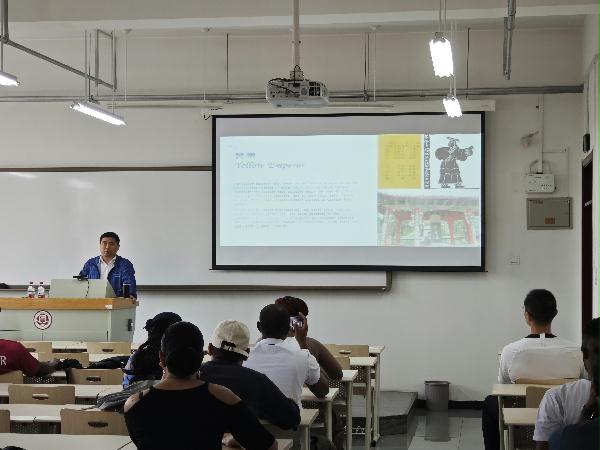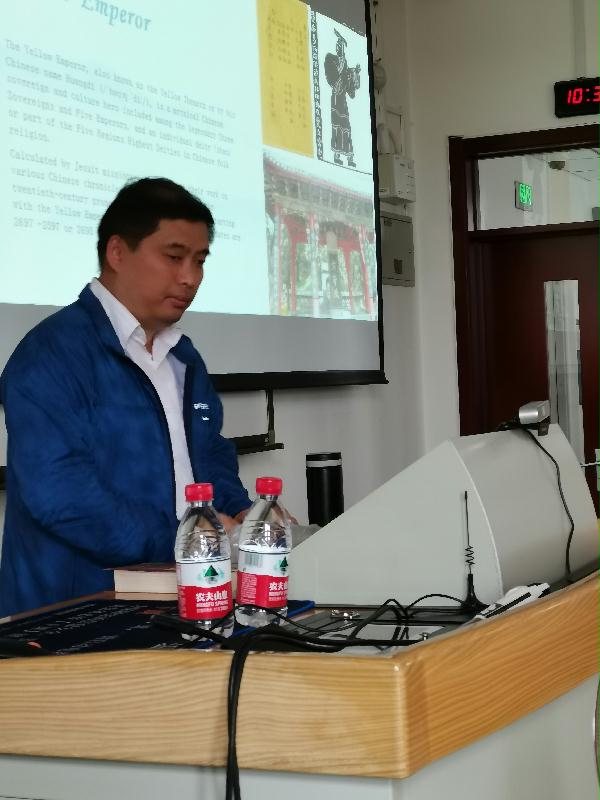|
留学生专题讲座| 中医学历史发展概要
|
||||
|
||||
|
On April 27, 2024, the School of Business invited Dr. Xue Nan to lecture to MBA international students. The topic is “Summary of Historical Development of Traditional Chinese Medicine”. Dr Xue is a Renowned expert in Beijing Massage Hospital.Traditional Chinese Medicine (TCM) has developed over many millennia, and there is little scientific evidence for some of its practices. Even though this article looks at the history of TCM, it's important to talk to qualified doctors about any medical issues. An Excursion Through Time: Conventional Chinese Medication's Development The practice of traditional Chinese medicine, also known as TCM, has a long and illustrious history. Its improvement was certainly not a direct movement, but instead a progression of headways based upon the shoulders of monsters.The fascinating journey that TCM has taken through the Yellow Emperor, Zhang Zhongjing, Sun Simiao, and Li Shizhen eras is the subject of this article. The Yellow Emperor(黄帝):Building Blocks While the specific starting points of TCM are covered in legend, the Yellow Sovereign, an unbelievable ruler accepted to have ruled around 2600 BC, is frequently credited with establishing its groundwork. The fundamental ideas of Yin-Yang and the Five Phases (五行) were outlined in the compilation of medical texts known as The Yellow Emperor's Inner Classic (《黄帝内经》). The Five Phases—Wood, Fire, Earth, Metal, and Water—represent a cyclical system that influences health and disease, while Yin and Yang represent opposing but complementary forces in nature. Understanding the human body as a microcosm of the universe was made easier by these ideas. The Internal Exemplary likewise underlined protection medication, dietary treatment, and keeping harmony between brain and body. Zhang Zhongjing(张仲景):quickly forward toward the Eastern Han Line (25-220 CE). Zhang Zhongjing, known as the "Sage of Traditional Chinese Medicine," rose to prominence during this period. Zhang witnessed a terrible plague that killed many people, including members of his family. Still up in the air to find arrangements, he fastidiously archived his clinical perceptions and treatment methodologies. TCM was revolutionized by his masterpiece, the Treatise on Cold Damage Disorders and Miscellaneous Illnesses (《伤寒论》). Identifying disease patterns based on a patient's specific symptom was the focus of this ground-breaking book. Zhang described herbal formulations that were tailored to each pattern rather than employing a generic strategy. This methodical methodology of example acknowledgment and separation stays a foundation of TCM conclusion and treatment right up to the present day. Sun Simiao(孙思邈): The Lord of Natural Medication Sun Simiao, who was hailed as the "King of Herbal Medicine" during the Tang Dynasty (618-907 CE), was another prominent medical figure. Sun was a prolific scholar who wrote several medical texts, including Qian Jin Yiao Fang's Prescriptions for Emergencies Worth a Thousand Gold. Acupuncture, moxibustion, gynecology, pediatrics, and other branches of Traditional Chinese Medicine were all covered in this comprehensive study. Sun particularly emphasized the significance of healthy lifestyle choices and preventative care. Sun Simiao's commitments stretched out past arranging existing information. Before using acupuncture, he advocated for moxibustion, which involves burning mugwort to stimulate acupuncture points. Additionally, he was instrumental in standardizing herbal formulations and ensuring that drugs were correctly identified. His work contributed to the establishment of TCM's foundation and its widespread use during the Tang Dynasty. Li Shizhen(李时珍): The Encyclopedia of Medical Knowledge The monumental work of Li Shizhen, the Compendium of Materia Medica (本草纲目), marked the culmination of centuries worth of TCM knowledge during the Ming Dynasty (1368-1644 CE). Li, a doctor, pharmacologist, and naturalist, spent more than 27 years fastidiously ordering data on therapeutic plants, creatures, and minerals. His extensive work recorded north of 1,800 substances, specifying their properties, uses, and possible aftereffects. The Compendium of Materia Medica grew to be a crucial component of TCM pharmacology and a useful resource for subsequent generations of healers. It included Li's discoveries and observations in addition to a list of known facts. This remarkable work spread beyond China, influencing medical practices in neighboring nations and even making its way to Europe via translations.Determination: A Tradition of Mending The excursion of TCM from the Yellow Emperor's basic ideas to the point-by-point Materia Medica of Li Shizhen features its nonstop advancement. Everyone of these figures, isolated by hundreds of years, is based upon the information on their ancestors. The TCM tradition was enriched by Zhang Zhongjing's pattern recognition, Sun Simiao's emphasis on preventative care, and Li Shizhen's comprehensive materia medica. While current medication has brought huge headways, TCM is drilled overall for its exceptional way of dealing with well-being and prosperity. The tradition of these authentic figures guarantees that this antiquated medication arrangement keeps on illuminating medical care rehearses and motivates continuous examination. author:PHILIP PAUL JADA MARTIN, 2023IMBA |
||||


